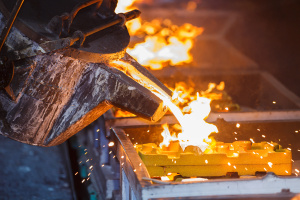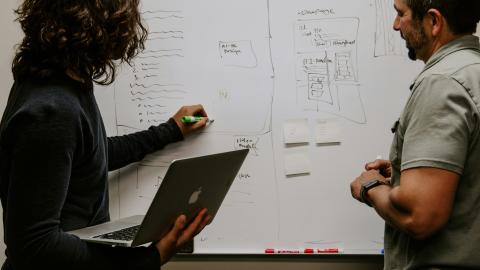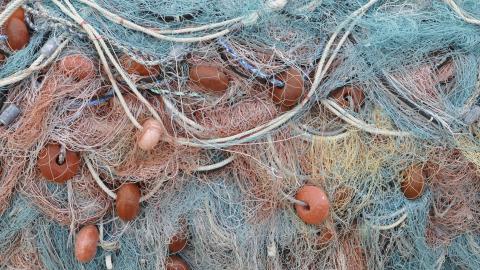
On June 23, 2018 the Occupational Safety and Health Administration (OSHA) issued a final rule on respirable crystalline silica - a dangerous particle present in many construction, maritime, and general industry workplaces across the nation.
 Inhaling very small, or "respirable", silica particles is known to cause multiple, serious diseases including silicosis, lung cancer, COPD, and kidney disease. It has also been listed by the American Cancer Society, World Health Organization, and the National Institutes of Health as a known human carcinogen. Yet, up until recently, workplace health and safety standards for occupational exposure to respirable silica offered very minimal protection to workers.
Inhaling very small, or "respirable", silica particles is known to cause multiple, serious diseases including silicosis, lung cancer, COPD, and kidney disease. It has also been listed by the American Cancer Society, World Health Organization, and the National Institutes of Health as a known human carcinogen. Yet, up until recently, workplace health and safety standards for occupational exposure to respirable silica offered very minimal protection to workers.
In light of the recently issued final rule, and mounting evidence of the negative health effects of respirable silica exposure, companies nation-wide are revamping their safety procedures, implementing engineering controls and offering higher levels of protection to their employees.
One such company is a local investment casting foundry, SeaCast Inc., where Exposure Sciences Master's Student, Robert Vannice, has been working as an intern as part of his training through the Northwest Center for Occupational Health and Safety (NWCOHS) Education and Research Center (ERC). Robert's work with SeaCast Inc. is to help develop engineering and administrative controls to lower worker's exposure to respirable crystalline silica, with the overall goal of eliminating the required use of respiratory protection by the workers.
In a foundry setting, workers are exposed to silica during the process of removing cooled metal from casting shells. After metal has been  poured into casting shells and has cooled, the shell needs to be removed from the metal. The removal of the shell is primarily conducted by a pneumatic knock-off hammer that vibrates the shell off of the metal casting. "This process produces respirable crystalline silica dust, and my project is to design effective engineering and administrative controls to bring worker exposures to respirable crystalline silica below the permissible exposure limit, and hopefully below the action limit" explains Robert.
poured into casting shells and has cooled, the shell needs to be removed from the metal. The removal of the shell is primarily conducted by a pneumatic knock-off hammer that vibrates the shell off of the metal casting. "This process produces respirable crystalline silica dust, and my project is to design effective engineering and administrative controls to bring worker exposures to respirable crystalline silica below the permissible exposure limit, and hopefully below the action limit" explains Robert.
As a company with a reputation for safety, and a long-standing relationship with the UW Department of Environmental and Occupational Health Sciences, SeaCast was enthusiastic in bringing Robert on as an intern. Jerry McCaslin, Corporate Environmental, Health and Safety (EHS) Manger, serves as Robert's internship mentor, helping Robert tackle the silica problem and practice his real-world environmental health and safety (EHS) skills.
"My role was to design, from scratch, a local exhaust ventilation system with integrated dust collection system to capture respirable crystalline silica from two sources and draw it away from the worker, and reduce or eliminate levels of respirable silica from being discharged into the atmosphere outside the foundry, along with a reduction of noise exposure to the foundry workers" explains Robert. His work is guided by four key aims: evaluate baseline respirable crystalline silica exposures through air monitoring and analysis of previous air monitoring data, design exposure controls for crystalline silica and noise, evaluate the exposure controls, and finally, develop a silica exposure control plan.
In addition to designing the new exhaust ventilation system, Robert has had the opportunity to practice his other EHS skills during his  internship. As an intern, Robert has experienced the day-to-day life of an EHS professional by conducting emergency response training with employees, performing weekly EHS inspections, calibrating equipment, and coordinating and facilitating safety committee meetings. He has also been involved in performing ergonomic assessments, managing hazardous waste generation, storage, and disposal, and sampling for hazards including silica, noise, welding fumes, and hexavalent chromium.
internship. As an intern, Robert has experienced the day-to-day life of an EHS professional by conducting emergency response training with employees, performing weekly EHS inspections, calibrating equipment, and coordinating and facilitating safety committee meetings. He has also been involved in performing ergonomic assessments, managing hazardous waste generation, storage, and disposal, and sampling for hazards including silica, noise, welding fumes, and hexavalent chromium.
"The most interesting thing that I have discovered so far is the complexity and operations in the fields of environmental, health, and safety," says Robert, "My internship advisor, Jerry McCaslin, and my project advisor, Marty Cohen, have been extremely supportive in my work, and I have also had the opportunity to work alongside experienced engineering professionals who have been mentors to me in many aspects of this project. This internship has provided me with the opportunities to directly apply the skills and knowledge I learned as an ERC trainee in Exposure Sciences, resulting in better health and safety protections for workers."




